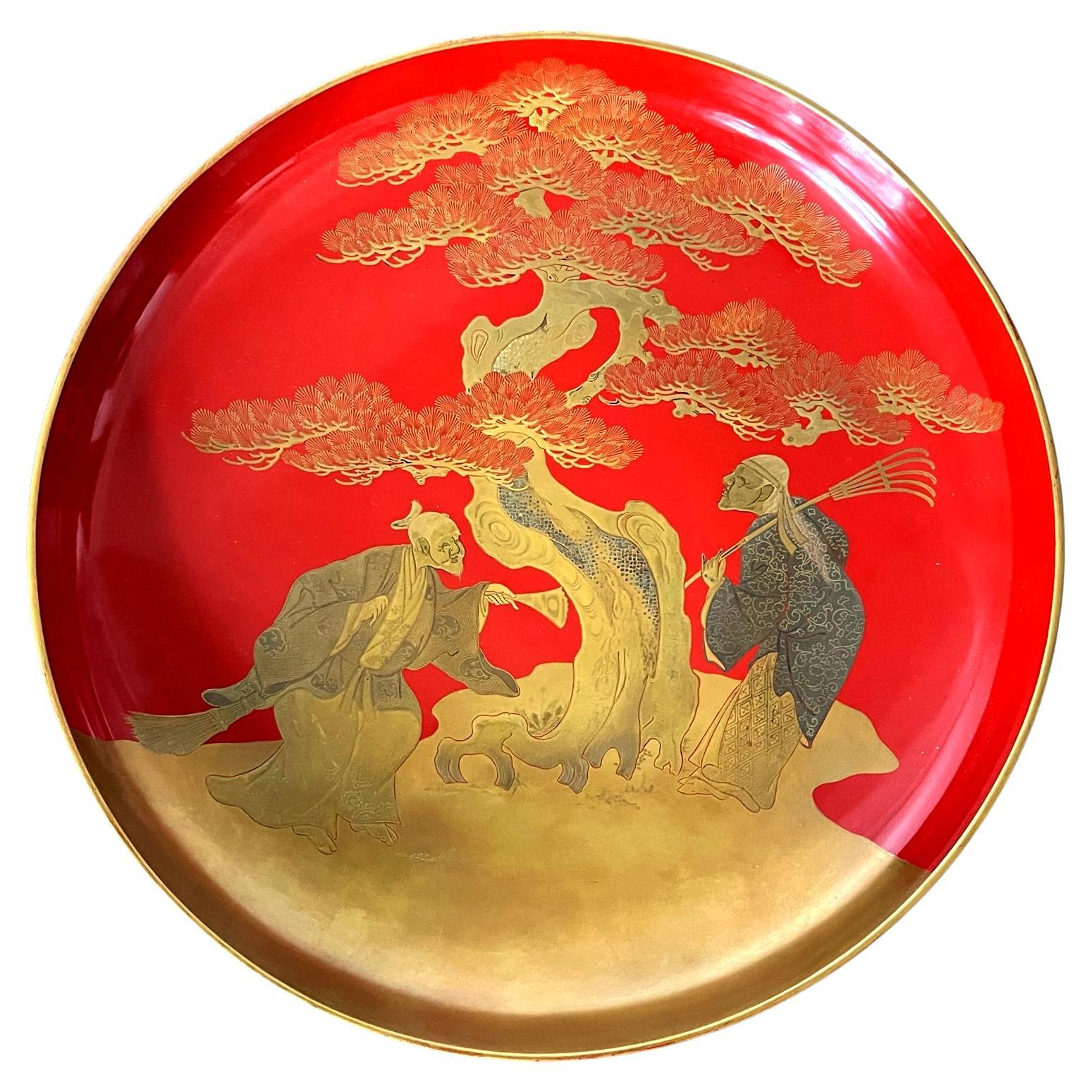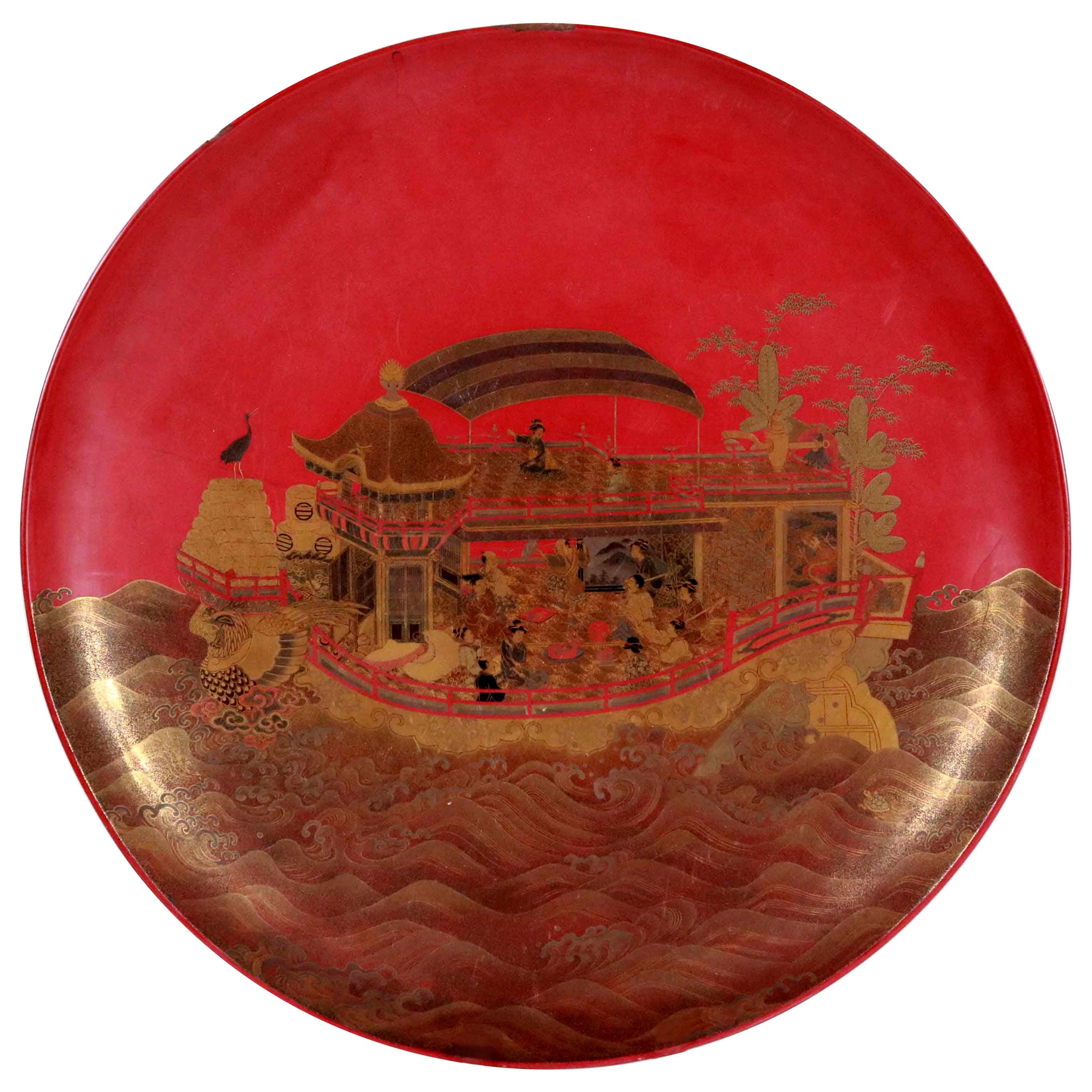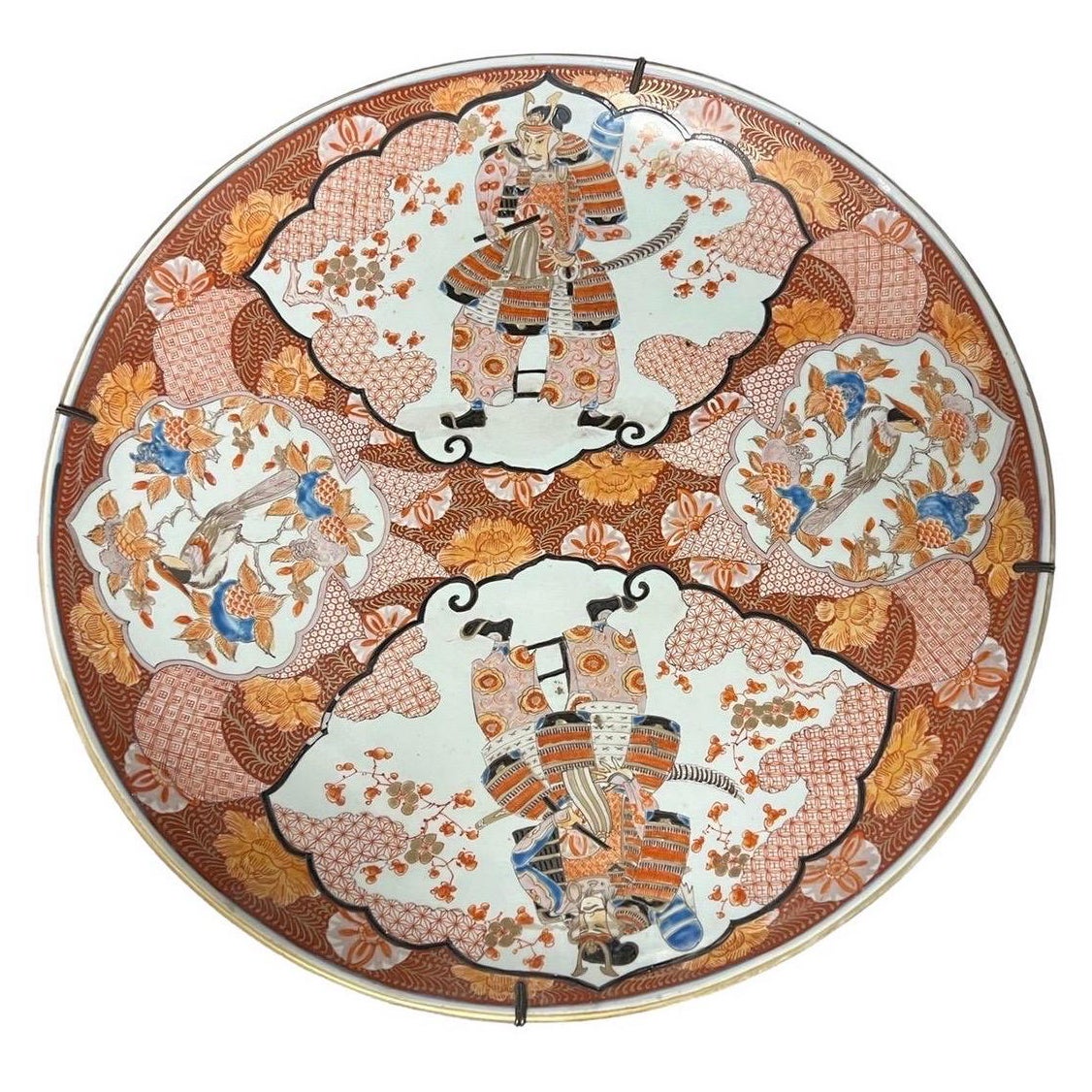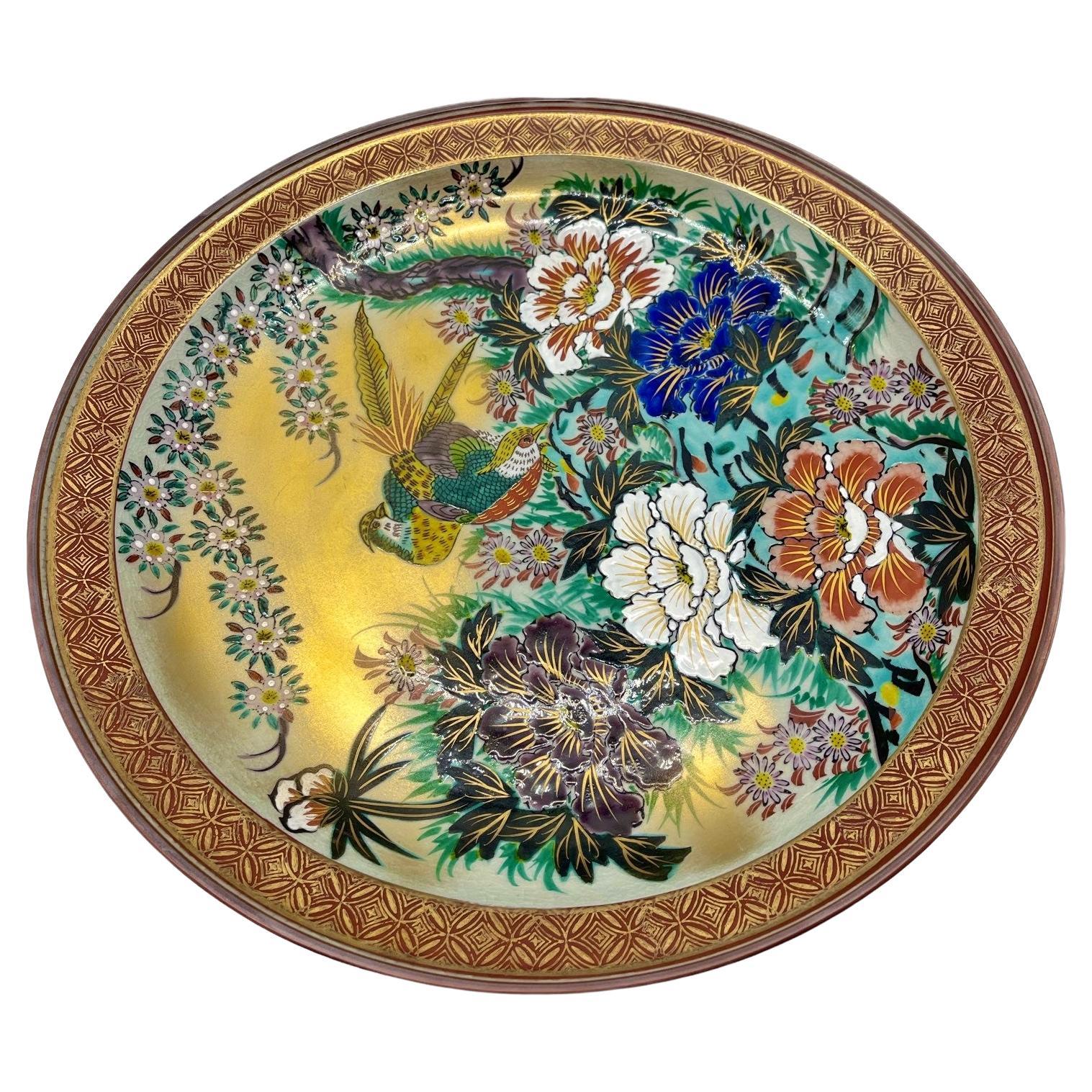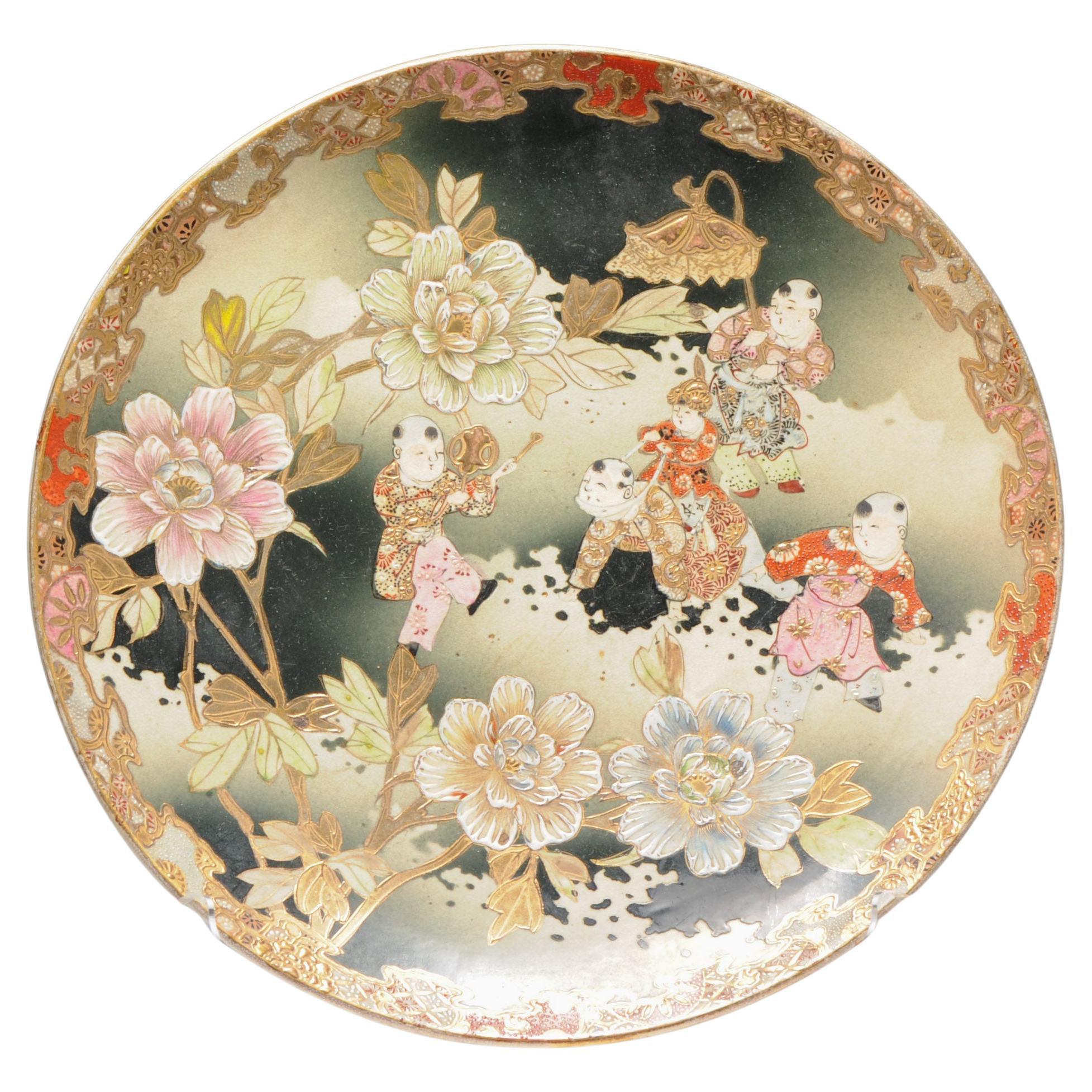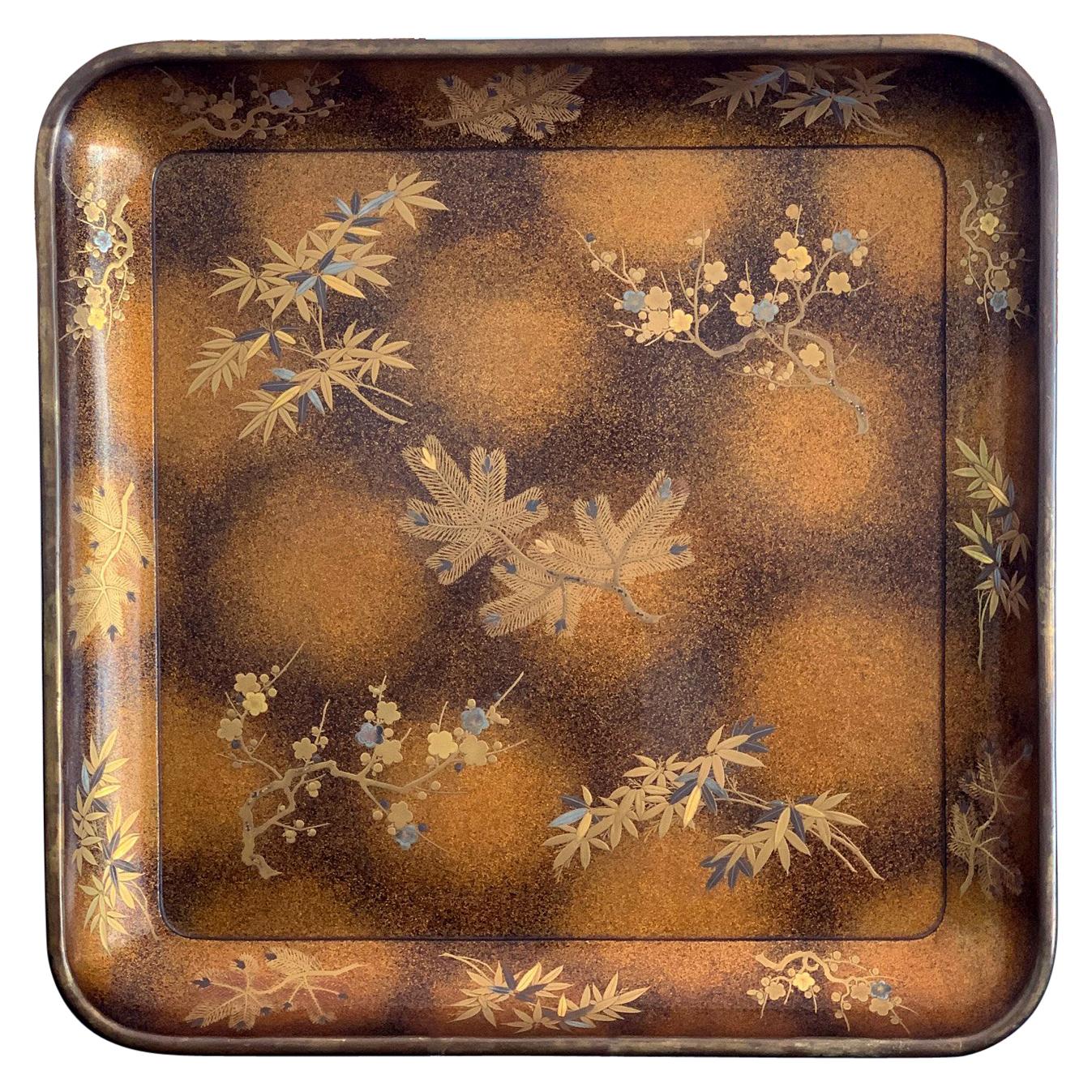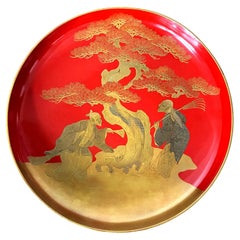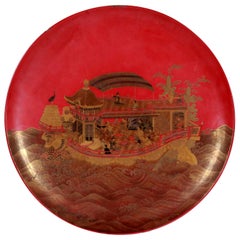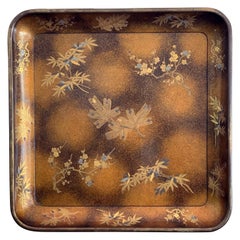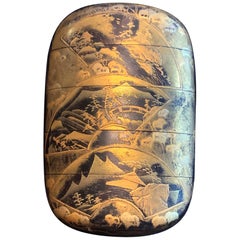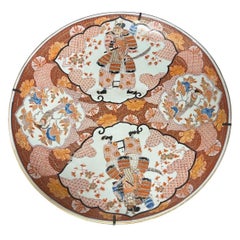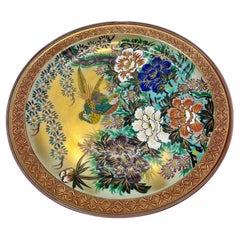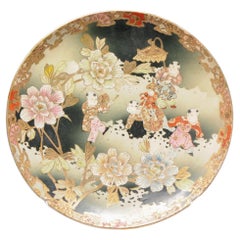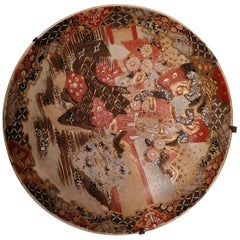Items Similar to Japanese Lacquer Maki-e Plate of Masked Dancer
Want more images or videos?
Request additional images or videos from the seller
1 of 17
Japanese Lacquer Maki-e Plate of Masked Dancer
$2,200
£1,662.93
€1,911
CA$3,063.49
A$3,408
CHF 1,786.52
MX$41,644.97
NOK 22,749.08
SEK 21,415.11
DKK 14,264.88
Shipping
Retrieving quote...The 1stDibs Promise:
Authenticity Guarantee,
Money-Back Guarantee,
24-Hour Cancellation
About the Item
A large circular plate with a short stem base in Vermillion lacquer color from Late Meiji Period circa end of 19th century to early 20th century. The surface was decorated with a fine maki-e picture that depicts a masked dancer in motion. The figure in the midst of motion dons an elaborate and luxuriant costume with wide sleeves and a tall hat. One hand holds a fan the other a clustered bell instrument. The masked dancer is most likely performing Bugaku, a clandestine dance reserved exclusively for entertaining the court, accompanied by Gagaku (Elegant Music).
The gold Maki-e decoration is well composed. The motion of the figure is lively. Great details were carried out in creating his elaborate costumes, especially the fan. Hiramakie-e, fundame and raden shell inlays were all used to their maximal potential to create the fine details and rich surface texture. It was not made to be used apparently but a pure decorative piece, likely for the luxury export market. With all the rims in gold fundame, the base of the dish also features a fine rendition of a pine branch. A beautiful example of late Meiji lacquer art.
Reference: The dancing actor on the lacquer bowl closely resembles a painting by Sasayama Yoi (died in 1743), now in the collection of Cincinnati Art Musuem. Accession No:1906.14.
- Dimensions:Height: 2 in (5.08 cm)Diameter: 10 in (25.4 cm)
- Style:Meiji (Of the Period)
- Materials and Techniques:
- Place of Origin:
- Period:
- Date of Manufacture:19th Century
- Condition:Wear consistent with age and use. Fine condition with minimal wear.
- Seller Location:Atlanta, GA
- Reference Number:1stDibs: LU945032998872
About the Seller
4.9
Platinum Seller
Premium sellers with a 4.7+ rating and 24-hour response times
Established in 2006
1stDibs seller since 2010
564 sales on 1stDibs
Typical response time: <1 hour
- ShippingRetrieving quote...Shipping from: Atlanta, GA
- Return Policy
Authenticity Guarantee
In the unlikely event there’s an issue with an item’s authenticity, contact us within 1 year for a full refund. DetailsMoney-Back Guarantee
If your item is not as described, is damaged in transit, or does not arrive, contact us within 7 days for a full refund. Details24-Hour Cancellation
You have a 24-hour grace period in which to reconsider your purchase, with no questions asked.Vetted Professional Sellers
Our world-class sellers must adhere to strict standards for service and quality, maintaining the integrity of our listings.Price-Match Guarantee
If you find that a seller listed the same item for a lower price elsewhere, we’ll match it.Trusted Global Delivery
Our best-in-class carrier network provides specialized shipping options worldwide, including custom delivery.More From This Seller
View AllJapanese Lacquer Maki-e Plate of Takasago Story
Located in Atlanta, GA
A large circular plate with a short stem base in Vermillion lacquer color from Late Meiji Period circa end of 19th century to early 20th century. ...
Category
Antique 19th Century Japanese Meiji Lacquer
Materials
Lacquer
Large Japanese Lacquer Plate with Elaborate Maki-e Design by Kajikawa
Located in Atlanta, GA
A large circular plate with a short stem base in Vermillion lacquer color. The surface was decorated with a stunning maki-e picture that depicts a...
Category
Antique 19th Century Japanese Japonisme Lacquer
Materials
Lacquer
Large Vintage Japanese Maki-e Lacquer Kimono Tray
Located in Atlanta, GA
A large square lacquer presentation tray (likely for kimono) predated 1950 of the Showa period. Elaborately decorated with Maki-e that depicts the prunus blossom, bamboo and needle p...
Category
Vintage 1940s Japanese Japonisme Lacquer
Materials
Wood, Lacquer
Fine Japanese Lacquered Inro by Yutokusai
Located in Atlanta, GA
A four-case lacquered Japanese inro by Yutokusai (Gyokkei), a lacquer artist active from 1845-1900 (end of Edo to Meiji period). The slightly round inro features a very intricate design with three unfolded fans on the front and two on the back: each reveals a vignette landscape scenery, likely real places in Japan. Using a combination of hiramaki-e and slight takamaki-e, the artist deftly created the pictures with fine details, rendering the inro as a miniature artwork...
Category
Antique 19th Century Japanese Japonisme Lacquer
Materials
Wood, Lacquer
Japanese Lacquered Maki-E Natsume in Kodaiji Style
Located in Atlanta, GA
A Japanese lacquered tea caddy (known as Natsume) with fine Maki-e decoration circa 18-19th century Edo to Meiji period. The large-sized nat...
Category
Antique 19th Century Japanese Meiji Lacquer
Materials
Wood, Lacquer
Japanese Inro by Koma Koryu Edo Period
Located in Atlanta, GA
A four-case lacquered inro by Koma Koryu circa 19th century late Edo period. The inro features a pair of Chinese mandarin duck resting under a bundle of blooming irises on the pond. ...
Category
Antique 19th Century Japanese Japonisme Lacquer
Materials
Wood, Lacquer
You May Also Like
Early 20th Century Meiji Period Japanese Samurai Enamel Decorated Charger
Located in Atlanta, GA
This platter is absolutely massive and stunning. The enamel decoration depicts a pair of samurais and birds. Verso is signed and had extra strength plate hanger...
Category
Antique 19th Century Ceramics
Materials
Enamel
$1,560 Sale Price
20% Off
Antique Japanese Plate Kutaniyaki 1950s
By Japanese Studio
Located in Paris, FR
This is Kutani 1950th Century.
This plate was made with porcelain, style of kutaniyaki.
It is a traditional craft of ceramics with overglaze painting and was born in the early Edo period. Kutani ware...
Category
Antique Mid-19th Century Japanese Japonisme Platters and Serveware
Materials
Porcelain
Antique 19th C Meiji Japanese Satsuma Plate, Charger Very Large Unmarked
Located in Amsterdam, Noord Holland
A very large Japanese Satsuma Plate of playing boys, Meiji Period. Incredible and very detailed piece. Just superb
Condition
Perfect, just some usage...
Category
Antique 19th Century Japanese Meiji Ceramics
Materials
Porcelain
$1,722 Sale Price
20% Off
Japanese Satsuma Plate Hand Painted Dish, Meiji Period
Located in Vienna, AT
Japanese porcelain dish or deep shell plate with a finely hand painted Satsuma pattern, dating to the 19th century, circa 1875.
Category
Antique 1870s Japanese Porcelain
Materials
Porcelain
Japanese Tagasode (Whose Sleeves?) Lacquer Incense Box, Kobako, Meiji Period
Located in Austin, TX
A fine and unusual Japanese lacquer box for incense accessories, kobako, featuring a tagasode (whose sleeves?) design, Meiji Period, circa 1900, Japan.
The exquisite box of simple rectangular shape worked in maki-e lacquer, taka-maki-e, and raden, all against a lush ground of gold nashiji. Fitted with silver rims.
The main decorative element of the box depicts a six panel folding screen, byobu, showing an interior scene with kimono strewn over a rack, a motif known as tagasode (whose sleeves), all in raised taka-maki-e lacquer and inlaid raden.
The screen depicts an intimate room with tatami mats on the floor and sliding shoji doors in the background. The foreground depicts a large clothing...
Category
Antique Early 1900s Japanese Meiji Lacquer
Materials
Silver
19th Century Japanese Shibayama Lacquered Inlay Charger, Meiji Period
Located in London, GB
19th Century Shibayama Lacquered Inlay Charger, Meiji Period, Japan
A decorative 19th Century Japanese charger beautifully depicting herons and pi...
Category
Antique Late 19th Century Japanese Meiji Decorative Art
Materials
Bone, Mother-of-Pearl, Lacquer
More Ways To Browse
Red Lacquer Furniture
Dior Asia
Antique Lacquer Painting
Japan Gold Plate
Japanese Fan Art
Antique Shell Inlay
Japanese Large Plate
Antique Japanese Fans
Japanese Lacquered Plates
Japanese Shell Art
Asian Bells
Maki E
Large Japanese Fan
Japan Bell
Antique Furniture Cincinnati
Maximal Art
Asian Dancing Figure
Red Lacquer Bowl
